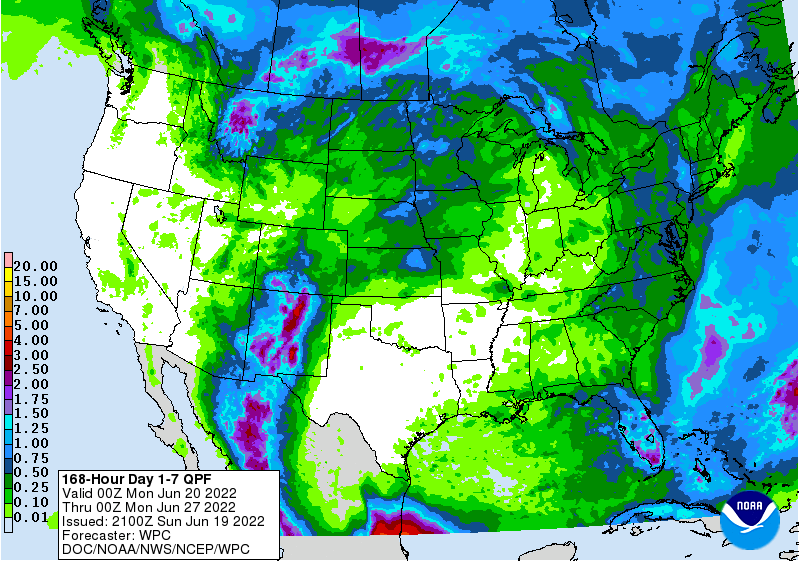“Some people feel the rain. Others just get wet.”—Bob Marley
If you follow the weather news carefully, you might have noticed a little factoid in this week’s headlines: Mawsynram, Meghalaya, in northeastern India reported the highest all-time single-day rainfall in the month of June on the 17th. At 1,003.6 mm (39.5 inches), it eclipsed the previous highest rainfall of 945.4 mm (37.2 inches) recorded on June 7, 1966, according to the Guwahati-based Regional Meteorological Centre (RMC). The extraordinary rain fell as part of the Indian monsoon while other parts of the country are in drought and have received less rain than usual so far, although monsoon rains have been picking up. Seventy percent of India’s rain comes from the monsoon so if the monsoon fails, agriculture and water supplies are severely impacted.

What is a monsoon?
If you ask a layperson what a monsoon is, they will probably tell you something about very heavy rain and might even mention that it is a seasonal rain event. The most famous monsoon occurs in India each year, but monsoons are found in other parts of the world as well including China, Africa, and the United States. In the U. S., the Southwest Monsoon season usually starts in mid-June. If you look at the weather forecasts this week, it is right on time. This period is characterized by heavy showers and strong moisture flowing into the region bringing wet conditions to areas of the country that seldom see rain in other seasons. But officially, a monsoon is not the rain itself but a change in the atmospheric flow driven by differences in land-sea heating in summer. Rain falls in one half of the cycle but the switch to the opposite flow pattern often means dry weather as high pressure forces moist air away from the land.

How a monsoon forms
Monsoons are driven by temperature differences between land and water caused by heating from the sun. The hot land causes air over it to rise, leading to a net low-pressure area. Air rushes in from other locations to even out the pressure. On a small scale this type of circulation occurs as a sea breeze that you might feel along the shores of a large lake or ocean. The land heats up much more quickly than the water during the day, causing rising air over land that creates a circulating cell of air that blows cooler air from water to land in afternoon when the temperature difference is strongest. You can often feel a sea breeze front as the cooler air moves inland, and sometimes thunderstorms form along that boundary between land and marine air masses.

In a monsoon this pattern happens on a much larger scale. In Southeast Asia, for example, the whole of India and surrounding countries heats up under the direct summer sun much more than the Indian Ocean to the south. That causes air to rise over the land and pulls in air from the ocean to the south. In India, meteorologists track the progression of the monsoon “front” from south to north across the region and celebrate when the monsoon finally arrives, bringing copious showers that bring much-needed rain to India. In the Southwest U. S., the coming of the monsoon is also watched carefully because it provides welcome moisture and cooler temperatures to the region due to increased cloud cover. More than 50% of the annual rainfall of Arizona and New Mexico falls during the Southwest monsoon, so it is an essential part of the seasonal cycle. But it can also bring lightning strikes that spark forest fires in areas that receive little rain, causing widespread destruction in those areas.

How monsoons are important to gardeners
If you live in a part of the world that is affected by monsoons, you need to be prepared for the variation of rain over the course of the year. During the wet part of the monsoon, you may experience very heavy rains that can erode your garden and wash out plants. If you have low-lying areas, roots can be affected by standing water to the detriment of your garden plants unless you put in good drainage. Conversely, you need to also be prepared for periods with little to no rain at all, sometimes for significant periods of time. That means you either need to use plants that are adapted to the wet-and-dry monsoon conditions or be prepared to irrigate them regularly to keep them in good shape.

Monsoons are one example of how earth’s geography, including sun angle, land-sea distribution, and differential heating all work together to create diverse climates across the globe. They have inspired local music and literature as essential elements of culture in India and other parts of the world. And they serve as a critical driver of plant life by providing needed moisture to growing plants and crops. So for those of you who live in monsoon climates, do a little dance when the rains begin. The monsoon is here!
Other resources:
British Meteorological Office video: What is a monsoon?
NOAA SciJinks: What is a monsoon
Monsoon video series of SW monsoon imagery set to music by Mike Olbinski—spectacular!
Chasing the Monsoon: A Modern Pilgrimage through India—my favorite book on tracking the monsoon through India
Thanks for sharing this. I live in Bombay, India. Monsoon is a great relief as it cools down the city from intense heat. The amazing adaptation of nature is the trees which survive the rains and thrive during the rest of the year without water. Only during the months of April, May and part of June we need to water them a bit. The recent concretisation of Bombay has led to local hot spots and felling of trees due to heavy winds. We also find that the rain water slows down and reduces soil erosion when it falls on trees.